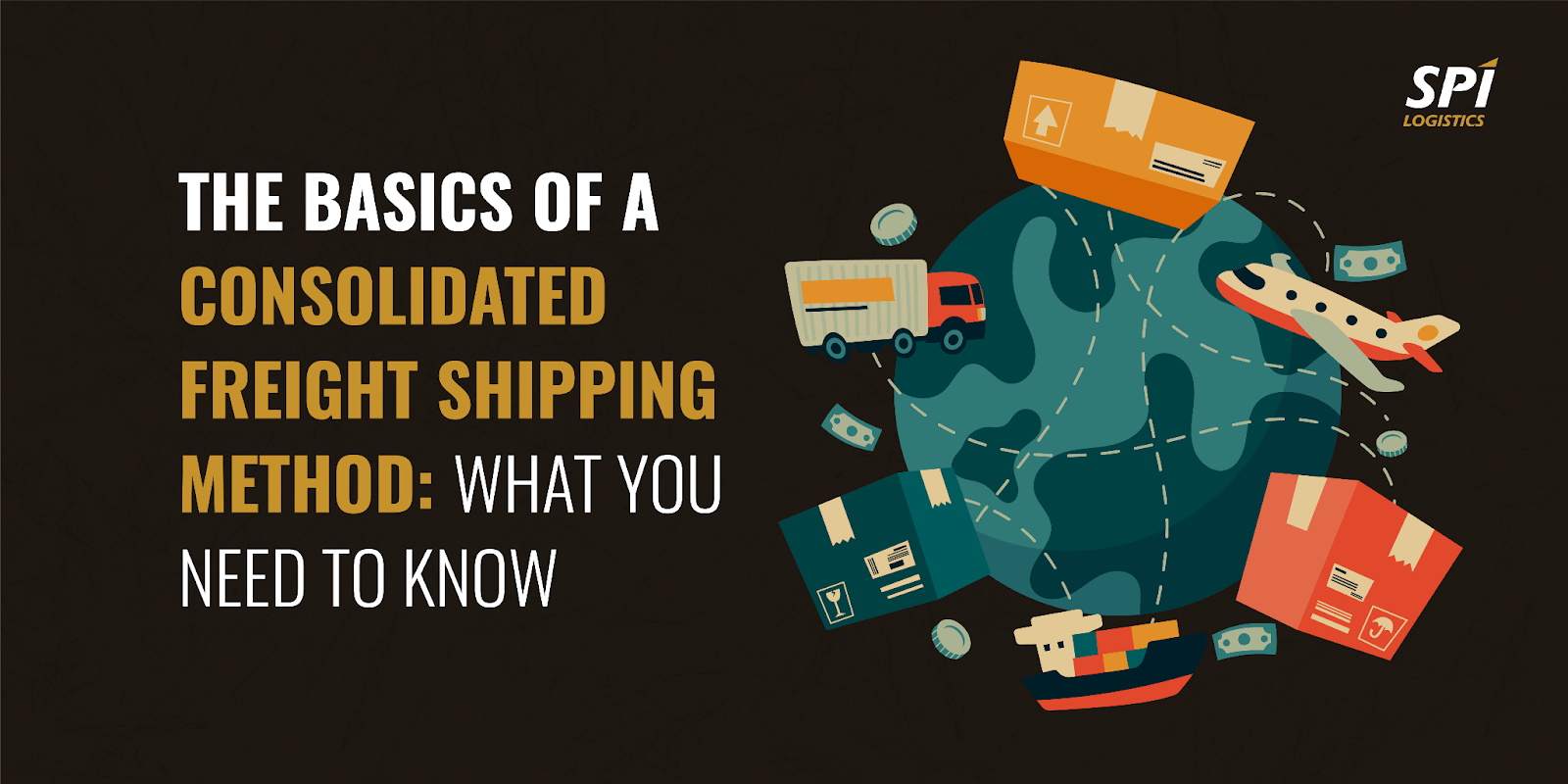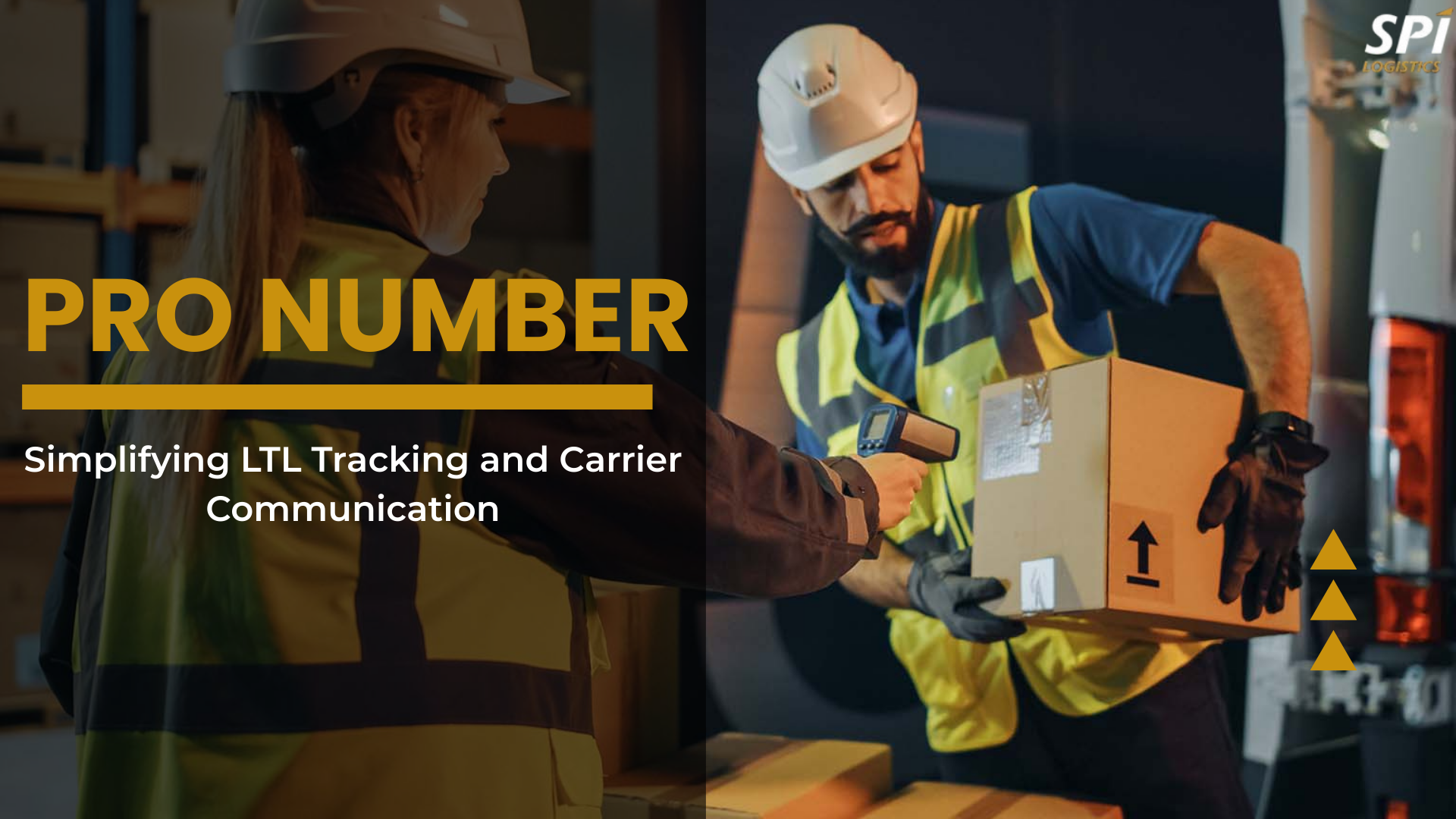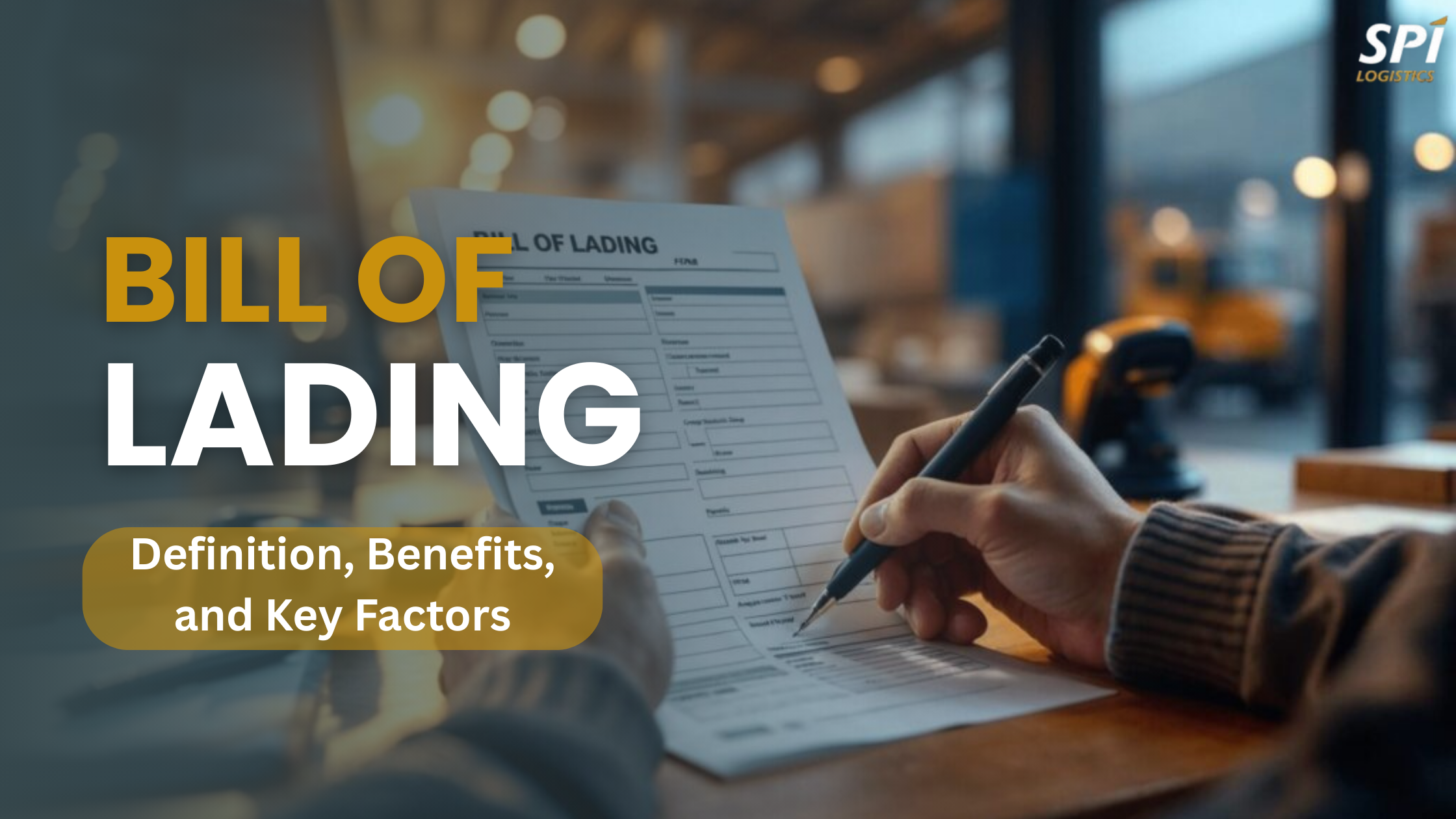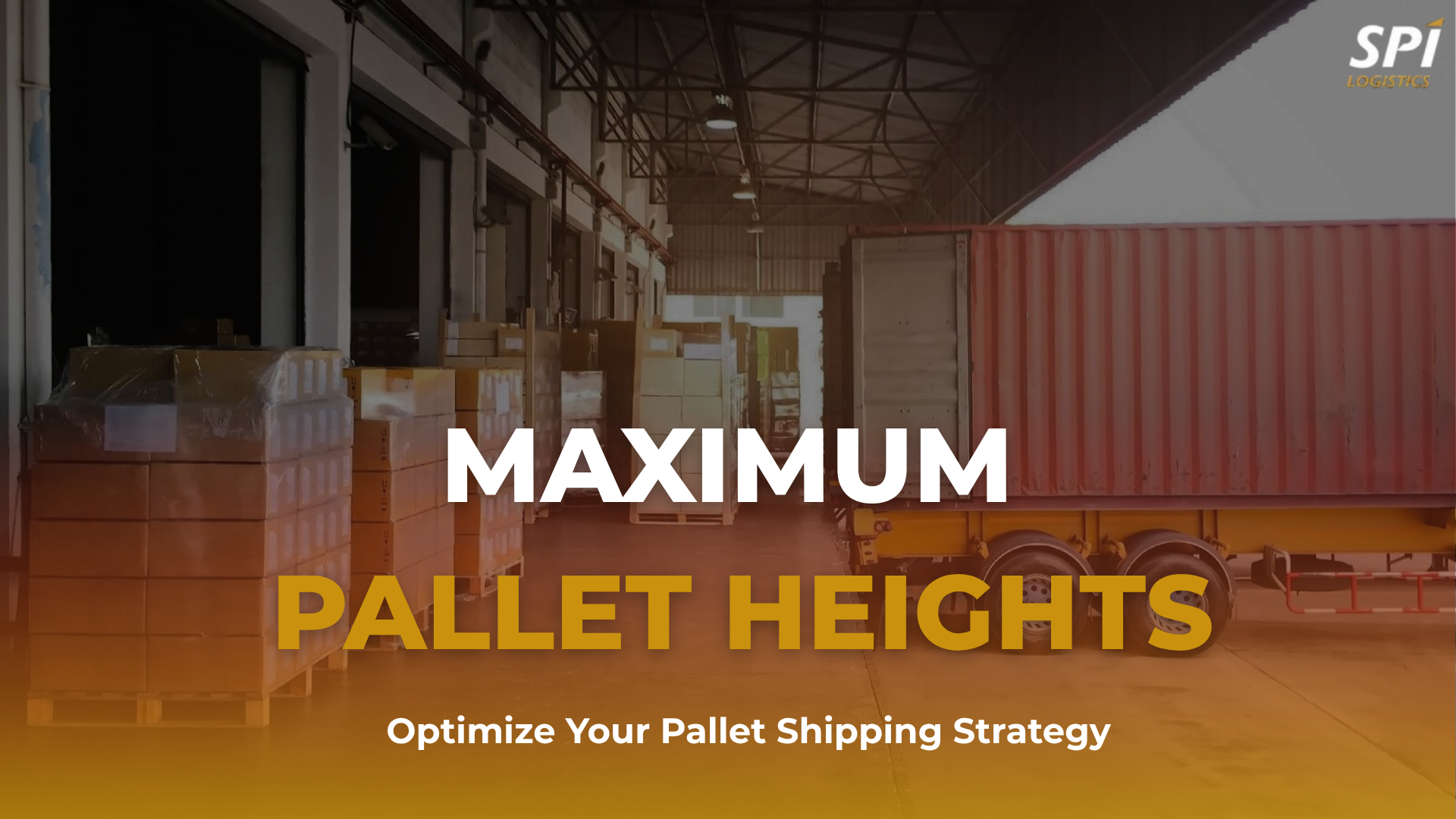Regardless of your business, you’ll always look for the best way to optimize your supply chain and reduce costs. And as the freight shipping industry evolves, so do the accompanying methods.
One of the most effective strategies businesses use today is consolidated freight shipping. This involves placing several shipments from different shippers into one form of transport. Not only does it streamline the entire supply chain and its logistics, but it offers other benefits, such as lowering costs and reducing environmental impact.
In fact, research shows that efficient freight consolidation can reduce transportation costs by up to 20% per truckload.
But the consolidated freight shipping method is so much more than that. In this blog, we will explore its characteristics, how it can benefit you, and how you can implement it.
What is the consolidated freight shipping method?

We’ve already briefly touched on what a consolidated freight shipping method is. But in simple terms, it’s a strategy used throughout logistics where you place several small shipments from different shippers into one larger shipment. It is also sometimes referred to as freight consolidation or groupage. All the small shipments must share a common leading destination, and then once they reach it, they’ll break off into their individual deliveries to reach the final destination.
Consolidated shipping process
Here’s the process of how consolidated freight shipping works:
- Various shippers will collect individual shipments throughout or surrounding a certain location.
- Each shipper brings the shipments to a central warehouse, where they are all placed into a single transport unit.
- The consolidated shipment, which contains all the smaller shipments, is then transported using the method of choice to a common leading destination.
- Once the shipments arrive at the new destination, other companies break them down and remove them to complete the delivery.
- The shipments are then delivered to their final destinations.
Types of goods suitable for consolidation
You may wonder why not everyone uses this method to cut costs and simplify the supply chain. This is because not all products and goods are suitable for consolidation.
If you want to know whether you can use freight consolidation for your own business, here are the types of goods that are suitable for it:
- Consumer goods – Most items that are sold by e-commerce and retail industries, such as electronics, household products, and clothes.
- Non-perishable food items – Products that won’t perish during transport, such as canned goods, dry food products, and packaged foods.
- Industrial supplies – Parts, components, and small machinery parts are often needed within an industrial setting.
- Pharmaceuticals – As long as the items have been packaged and handled correctly, pharmaceuticals can use the consolidated shipping method.
- General merchandise – Anything that doesn’t require special handling, conditions, or temperatures to be transported.
Key components of consolidated freight shipping

Many people assume that the method of transport is the only component used in freight consolidation. They would be wrong. There are actually three key components that play a part in the logistics strategy, and they each have their own crucial functions to ensure it operates smoothly.
Warehousing
Before the merchandise and shipments can be combined into a single shipment, they need somewhere to be stored. This is where warehouses come into play. They act as central hubs where the products are received, sorted, and consolidated into the larger shipment. The people who work in these facilities need to work well with all the shippers using the consolidated method and ensure everything gets properly sorted before transportation.
Here are the main processes used throughout warehousing for consolidation:
- The items are received by the warehouse by the range of shippers using the consolidated shipment. The workers then inspect and sort each package based on where it’s going, what types of products they are, and any other specific requirements.
- Before the items can be sent off for transportation, they need to be stored in good condition. The warehouse ensures there is enough space for each shipment and that they have strong knowledge of the inventory so they know where everything is once they need to grab it again.
- The warehousing staff will find each of the smaller shipments for the consolidated shipment and combine them to create a full load while optimizing the space as much as possible.
Logistics providers
Third-party logistics (3PL), like SPI Logistics, also play a crucial role in ensuring everything in the consolidation process runs smoothly, and all shipments get to their end destination on time and in good condition. This is because these companies have the expertise to manage and execute various logistics operations for several companies effectively, streamlining the entire supply chain.
Here are the main processes that logistics providers use throughout the consolidation method:
- The provider will organize and coordinate the collection of shipments from the various shippers using the consolidation. They’ll work closely with each of them, ensuring each package is picked up in a timely manner and delivered to the warehouse safely.
- Throughout every part of the supply chain and even throughout the consolidation process, the providers use advanced logistics technology to stay on top of everything. This includes things such as tracking shipments, managing inventory, and optimizing routes.
- Not only do many 3PL companies suggest consolidated shipping to help save costs, but that isn’t the only way they contribute towards cost management. They also have the know-how on how to negotiate better rates with carriers, passing on cost savings to their clients.
Transportation
Of course, one of the most important components in freight consolidation is transportation. This is the method used to combine multiple shipments. The type of transport can vary depending on your goals or where you’re transporting the items.
- Air – If you are transporting high-value products that must reach a certain destination as quickly as possible, you might opt for air transport. It’s the best way to ensure fast delivery when you’re shipping internationally or over a long distance domestically.
- Road – This is the most common type of transport used for domestic consolidated shipments. When you use trucks to move your freight, you receive more flexibility in routes and schedules, especially when they only go a shorter distance.
- Sea—Moving freight by sea is the best consolidation method for sending large and heavy items. It’s more cost-effective than air transport for international shipments, and the arrival time isn’t time-sensitive.
Benefits of consolidated freight shipping

There’s a reason more businesses are opting for consolidated freight shipping nowadays, and that’s because it’s a method that comes with a wide range of benefits. Here’s what you can look forward to experiencing if you opt for it yourself:
Cost efficiency
We’ve already briefly touched on this, but when you consolidate shipments, you significantly lower transportation costs. Instead of sending out smaller shipments each time a customer places an order, you combine your packages with other shippers who need to reach a similar destination. Overall, the cost per unit of freight decreases, and you end up getting more out of your bottom line.
The costs are kept lower because carriers often offer discounted rates for full truckloads and containers. Even if you’re splitting the cost with other shippers, you still don’t have to pay as much. There are also fewer handling and storage costs and lower fuel expenses during transportation.
Environmental impact
When you send out multiple shipments just for your business per week, you’re making several trips that could be avoided. By consolidating your shipments with others, you can experience a wide range of environmental benefits, too. The main one is that fewer trips mean fewer emissions are released into the environment, including carbon dioxide and greenhouse gases, reducing your overall carbon footprint.
Similarly, consolidation means less fuel needs to be used. This enhanced the fuel efficiency of the supply chain and also helped improve the environment. Alongside this, you get better peace of mind and know that you’re playing your part in helping make our world a healthier place.
Reduced risk of damage
Many companies don’t consider this benefit when consolidating their freight. But in fact, placing your shipments with others onto a larger shipment often leads to safer transport and fewer instances of damage. This is mainly because there are fewer handling events, which means that your goods don’t need to be loaded, unloaded, or transferred as much. This reduces any opportunities for damage.
Another way that the freight consolidation method reduces the risk of damage is that it involves improved packaging and palletizing. Since those moving the goods are looking for a full shipment, they want to make the most out of the space, which means each package is better placed and secured, minimizing any chance of movement during transport.
Efficiency and time-saving
Last but not least, consolidated freight shipping improves overall efficiency and saves time in logistics operations. This is because when you combine your shipments with others, you, or the logistics provider you’re working with, can streamline your operations. This is because there are fewer complex steps in the shipment process, meaning you can instead put your time into other parts of the supply chain.
Consolidation also often leads to faster delivery times, especially when you’re using intermodal transport options. It helps you get your products to the end destination more quickly, and you’re left with happier customers who have their goods within the desired timeframe.
Challenges and considerations
While it’s always good to look at the benefits of any method within logistics, you still need to approach them with caution. Therefore, you should have knowledge of any challenges and considerations associated with consolidated freight:
- While placing multiple shipments into a singular one to arrive at a central warehouse can streamline operations, it can also be complex. If one of the shippers in the consolidation has a delay, this can hold up the whole process and lead to delays for you.
- There are limitations in place for certain goods, such as perishables (fresh produce and dairy products), hazardous materials that require special handling, and high-value or fragile items that require additional security.
- International consolidation means meeting complex customs and regulatory requirements. For example, every shipment in the consolidated load must have its own set of documentation. If there are any discrepancies in any part of the consolidated load, the entire shipment might also face delays at customs.
How to implement the consolidated freight shipping method

Are you ready to use the consolidated freight shipping method? Here’s how you can implement it in your own business when sending out goods:
- Determine whether consolidated freight shipping is the best thing for your business. It’s best for businesses that have consistent smaller shipments and are more flexible with their delivery times. You will also need to ensure the types of goods you sell are suitable for consolidation.
- Select the right logistics partner, like SPI Logistics, to help give you peace of mind that you’ll always have successful consolidation. We have the experience and expertise that you can rely on, as well as a robust network that aligns with many businesses’ service routes.
- Leverage a wide range of technology and tools to manage and track your consolidated shipments. This includes things such as advanced tracking systems to monitor the location and status of your packages in real time. You might also want to introduce warehouse management systems or data analytics tools to analyze patterns, optimize routes, and forecast demand.
Conclusion
The consolidated freight shipping method is one that many more businesses are starting to introduce into their logistics strategy, especially if they’re looking to save money and reduce their carbon footprint.
The best thing to do is have an expert 3PL provider by your side, and SPI Logistics is here to help. We can help you put together your consolidated shipment and ensure everything runs smoothly, from when it arrives at the warehouse to when it gets to its final destination. Talk to one of our experts today to get started.




